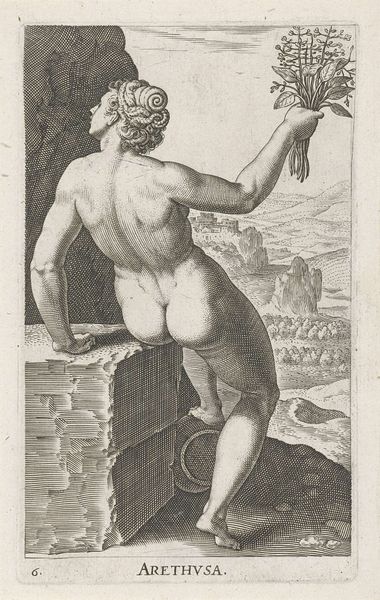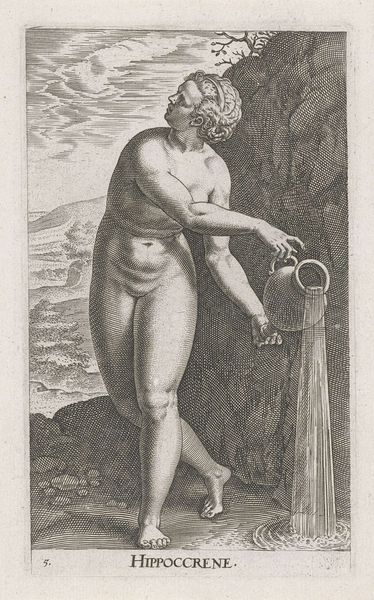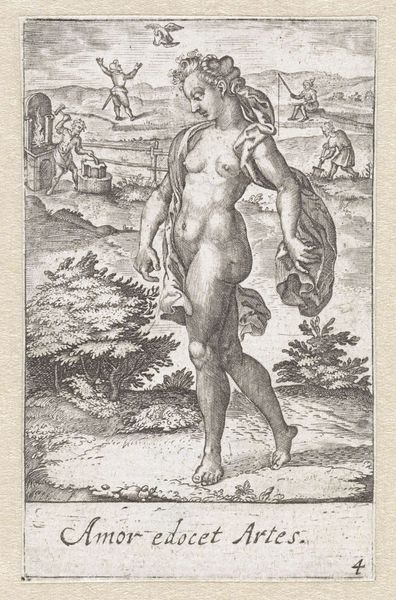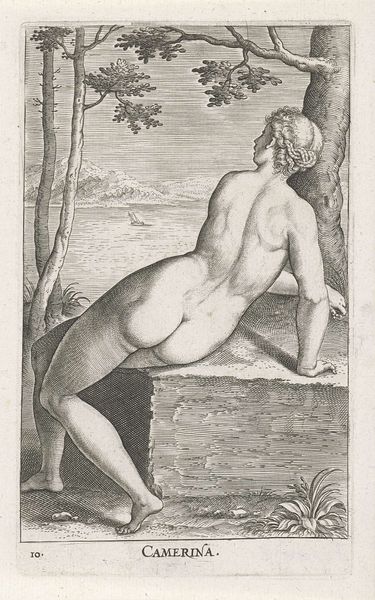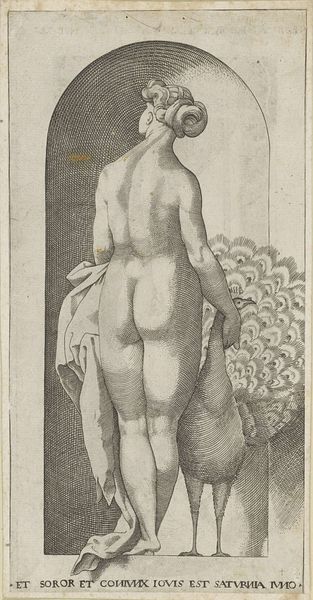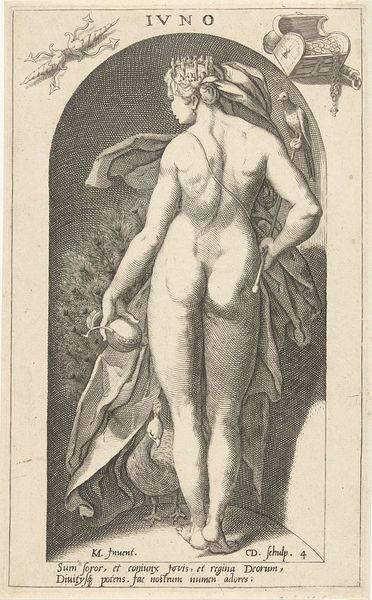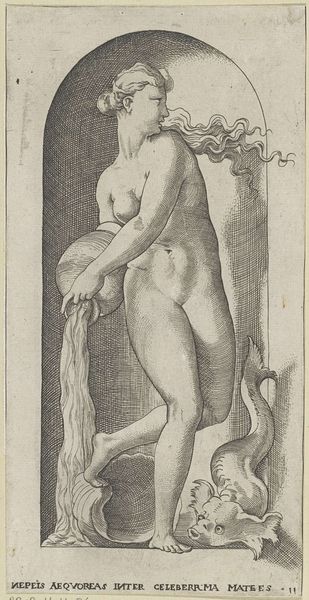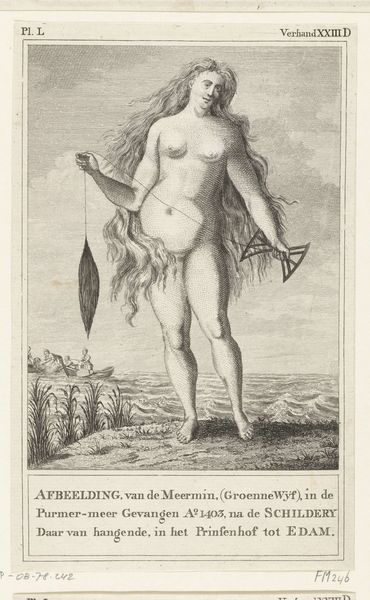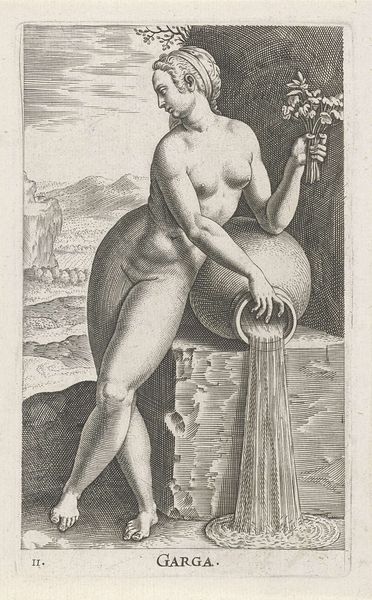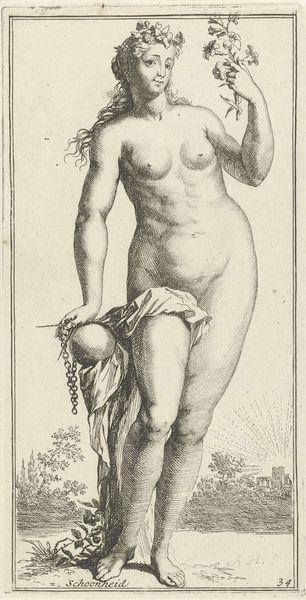
Dimensions: height 165 mm, width 101 mm
Copyright: Rijks Museum: Open Domain
Curator: What a fascinating image, it almost feels alive despite the simple monochromatic scheme. Editor: Yes, there’s something arresting about the texture and scale within a clearly traditional allegorical landscape. Curator: Well, this is Philips Galle's "Waternimf Ambracia," created in 1587. As an engraving, it plays with contrasts between the almost stark rendering of the nymph against the nuanced depth of the landscape behind her. Note her confident pose, the muscular definition rendered through cross-hatching... it presents the female nude in such a self-assured manner. Editor: Interesting that you highlight that confidence because for me, what stands out most is the implied labor of engraving itself, all those individual lines coalescing. The paper support is as important as the mythological representation itself, don’t you think? Curator: Absolutely. The formal choices draw us into this idealized version of nature. See how the figure leads the eye through planes of the composition; the flowers, the water in the mid-ground and the hills...each area is so subtly offset through the use of line density and placement. It echoes classical ideals. Editor: Yet that density also highlights the artifice and production of this natural landscape. The materials--ink, paper, metal plate— are brought to our attention as much as this constructed ‘natural’ world that seeks to conceal the marks of its creation. We are always aware of Galle's labor as a mediator. Curator: A vital consideration when viewing allegory, right? We are meant to perceive, interpret and understand layers of symbolism; it's a thoughtful exercise in deconstruction. Editor: In a way, the image is always revealing and concealing labor. Its physical creation becomes part of the intellectual process of interpreting the image. Curator: I will never see galle's mark the same way again. Editor: And I'll admire its structural organization. A remarkable interplay.
Comments
No comments
Be the first to comment and join the conversation on the ultimate creative platform.
